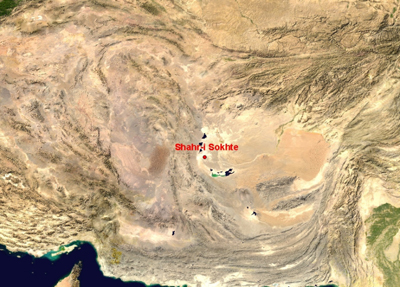

Women of Burnt City Defined Family EconomyExistence of clay stamps in the graves of women in Burnt City indicates that they managed the economy of their families some 5,000 years ago. Tehran, 18 February 2006 (CHN) -- Nine seasons of archeological excavations in the graves of Burnt City Historical Site, located in Sistan va Baluchestan Province, and discovery of clay stamps in the graves of women specify that the women were in charge of managing the economy of their families and played important roles in the society around 3000 BC. "Enormous family clay stamps were discovered during the past eight seasons of excavations in Burnt City, most of which were found in the women's graves. These stamps were used as family signatures. The 9th season of excavation also led to the same results," said Dr. Mansoor Sajjadi, head of archeological excavation team in Burnt City.  On the types of the discovered clay stamps, Sajjadi pointed out that "the clay stamps found in different historical sites so far are generally categorized in two forms of cylindrical and flat stamp shapes. The discovered stamps in Burnt City are of the flat type, and were used as the signature of each family. These stamps were applied just for family affairs and were different from the state stamps." Sajjadi also stressed that, "Discovery of the clay stamps in the graves of women may not be used to claim that the society of that time was a matriarchal one. The stamps were not being used in qualitative control of economy in the society and there have been insignificant signs of personal or family stamps on the goods stored in storage rooms. However, it can safely be said that women were in charge of controlling the economy of their families." Burnt City, situated in Sistan va Baluchestan Province, southeast of Iran, is one of the most important pre-historic sites of the country. Nine seasons of archeological excavations in the site indicate that Burnt City was an important center of civilization and trade some 5000 years ago. Burnt City is regarded as a crucial historical site in the eastern Iranian plateau. Some unique relics such as the animated figure of a goat on a clay barrel, which is believed to be the first animation work in the history of the world, and a very unique backgammon, which is also believed to be the oldest one in the world, have been discovered in this historical site during the archeological excavations.  Front Page Front Page |